|
Opinions How tech trends are shaping hotel meeting spaces 06 SEPTEMBER 2017 12:11 PM New trends in technology are changing the way meetings are planned, which has an effect on how hotels can book their meeting spaces. By Jeff Loether Sweeping through the hotel industry, there are several waves of change in how meetings are planned that affect our meeting spaces, technologies and design. What used to be simple became complex and is now simple again. Formerly complex and expensive presentation technology is now simple, reliable and affordable. Our customers are way smarter and more tech-facile than we used to be. What used to be portable is now being built-in. What used to be hidden from view are now design “features.” What is going on? Let’s look at some of the major trends in meetings and events and the technology that supports this revenue-critical element in our industry: Recent market research shows the top concern and demand of meeting planners and attendees is, you guessed it, gobs of broadband internet access. Why the Wi-Fi hockey stick? These technologies include: social media, streaming, location- aware beacons and way-finding, event apps, smartphone talk- back and audience polling, attendee tracking, second screen, virtual and hybrid events, and multi-site conferencing and “telepresence” (a term that has lost its meaning). Also slowly emerging are virtual and augmented reality technologies. |
What do these trends have in common? First, all the advanced meeting and event technologies depend on having unrestricted access to broadband Wi-Fi and to the internet. In addition, guests themselves want unlimited Wi-Fi and cell data connectivity for their smartphones, tablets, watches, and Wi-Fi-enabled key fobs. This increased demand for bandwidth also reflects the emerging “Internet of Things” phenomenon.
The bad news: To keep up with demand, we must keep up with Wi-Fi, cellular and internet-access technologies as an ongoing investment. More on this in a minute.
The good news is that almost all the emerging and active technologies are portable in nature. The guests bring their own technology with them, and more specialized technology is brought into the event space in a suitcase and deployed on an as-needed basis. Cameras, codecs, production equipment, beacons, VR headsets, etc. So, the hotel itself does not have to invest in the technologies. But the hotel must invest and continue to improve its Wi-Fi and internet access to support these and tomorrow’s tech.
Another factor to consider: Many of the interactive, virtual and hybrid technologies depend on optical cameras and acoustic microphones to capture the immediate environment or the event itself. Why does this matter? Those cameras and microphones depend on good quality lighting and acoustics. Unfortunately, many of the current trends in interior design result in “boom boxes” with hollow sounding, reverberant noisy spaces. While nice to look at, it’s not what our clients want to hear.
Recently, IACC sponsored a global market study of meeting planners and event management teams and generated a report titled “The Future of Meetings.” Guess what? The second and third most critical factor being demanded by both meeting planners and venue management teams was quality lighting and good acoustics.
Coincidence? I think not. Our clients are discovering that the infrastructure of our event spaces, and especially the quality of the lighting and sound and acoustics, critically affects the subjective experience of quality for our clients and guests.
And these expectations extend well beyond the traditionally designated event spaces. The same market research shows major trends toward “third spaces” or using alternative spaces in and around the hotel for impromptu meetings, huddles, breakouts, activities, etc. The takeaway from this is that hotels should break out of the box to create memorable, unique experiences for the meeting attendees. So, the Wi-Fi, cellular, internet, lighting and acoustics of all public areas must also be optimized to accommodate today’s meeting planner and attendee expectations for technology.
When planning for next year’s renovations, think basics and bandwidth:
Make sure there are plenty of accessible electrical outlets to let guests recharge their devices.
Keep the background noise levels low and make sure there is enough acoustically absorptive materials on the proper surfaces to minimize echoes and reverberation.
Make sure movable partitions isolate rooms acoustically as well as visually.
Provide quality, basic, built-in voice reinforcement and program audio sound systems. Provide high quality lighting with easy to adjust controls and adequate light color and levels
for quality video.
Provide a flexible rigging system in the main event spaces to accommodate flexible
production and staging arrangements.
Finally, don’t get caught up in chasing the latest interactive technology gadget. That can be
rented on an event-by event basis. Besides, presenters do not come to hotels to try to use a new technology they’ve never used before and embarrass themselves in front of their clients. They want to use what’s familiar to them, and they typically bring that with them. Let’s build good spaces first.
Jeff Loether is president and founder of ELECTRO-MEDIA DESIGN, Ltd., an independent AudioVisual systems design and Acoustical consultation group with expertise in audio, video, control, and related presentation, entertainment, and communications technologies. As independent consultants over the last 27 years, EMD has provided consulting services for more than 900 projects globally, including: hotels, conference and convention centers, spas and resorts, government facilities, corporate board rooms, theaters and auditoria, schools and electronic classrooms, training and meeting rooms, courtrooms, places of worship, restaurants and nightclubs, sports facilities and venues, and command and control centers.
The opinions expressed in this column do not necessarily reflect the opinions of Hotel News Now or its parent company, STR and its affiliated companies. Bloggers published on this site are given the freedom to express views that may be controversial, but our goal is to provoke thought and constructive discussion within our reader community. Please feel free to comment or contact an editor with any questions or concerns.

